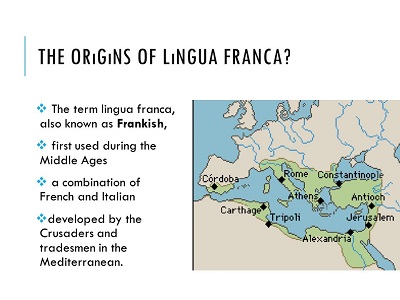Latin was the lingua franca common language of medieval and renaissance europe long after the fall of the roman empire

Latin: The Lingua Franca of Medieval and Renaissance Europe

In medieval and renaissance Europe, Latin reigned supreme as the lingua franca, despite the fall of the mighty Roman Empire. This ancient language, rooted in the Romans’ rich cultural heritage, became the common mode of communication among scholars, clergy, diplomats, and intellectuals across the continent. Latin’s influence and endurance persisted for centuries, marking its indelible imprint on European history.
The Resilience of Latin
To understand why Latin persisted as the dominant language long after the Roman Empire’s collapse, it is essential to delve into its historical significance. Latin initially emerged as the vernacular of the Latins, an ancient tribe in central Italy. Over time, the Romans expanded their dominion, forging an expansive empire that stretched from Britain to Egypt. As their empire flourished, so did the influence of Latin.

Latin’s significance extended beyond the merely linguistic. It became a symbol of power, intellect, and cultural superiority. Even long after the fall of Rome in 476 AD, Latin did not fade away. Instead, it found a new purpose as the language of the Church, gaining further prominence as Christianity spread throughout Europe. The rise of the Papal States, the authority of the Roman Catholic Church, and the necessity for religious unity all contributed to the continued use and preservation of Latin across the continent.
The Universality of Latin
Latin’s universal appeal stemmed from its accessibility and wide-ranging applications. As the Catholic Church’s language, virtually all clergy members, regardless of their regional origins, had to master Latin to perform their religious duties. Latin was used to conduct Mass, write theological treatises, and preserve religious texts. The universality of Latin ensured that scholars and priests from different countries could communicate and collaborate effectively, transcending linguistic barriers.
Moreover, Latin dominated the academic realm. In universities and educational institutions across Europe, Latin served as the language of instruction and scholarly discourse. Students and intellectuals learned Latin to gain access to the wealth of knowledge preserved in ancient Roman and Greek texts. Prominent thinkers, such as Thomas Aquinas and Isaac Newton, composed their groundbreaking works in Latin, solidifying its role as the language of learning.
Latin: A Language of Diplomacy and Politics
The practicality of Latin also made it indispensable in political and diplomatic arenas. Latin’s neutrality made it a preferred mode of communication between rulers and diplomats from different kingdoms and empires. In an era of shifting power dynamics and constant political upheaval, Latin provided a common ground, allowing negotiations and treaties to take place smoothly.
The longevity of Latin as the lingua franca was further reinforced by the Catholic Church’s influence over Europe’s political landscape. Ecclesiastical authorities utilized Latin in official documents and decrees, ensuring their universal comprehension. The Catholic Church’s vast administrative network, coupled with Latin’s inherent versatility, solidified its position as the language of choice for governance and legislation.
The Enduring Legacy of Latin
While Latin’s reign as the lingua franca gradually waned with the advent of the Renaissance, its influence and legacy cannot be understated. Latin laid the foundation for the development of the Romance languages, branching into diverse tongues such as Italian, French, Spanish, Portuguese, and Romanian. Latin also significantly impacted the English language, contributing a multitude of words and phrases that are still in use today.
In conclusion, Latin’s status as the lingua franca of medieval and renaissance Europe persisted long after the fall of the Roman Empire. Its universality, cultural significance, and widespread application across various domains ensured its endurance. Latin shaped European history, serving as the thread that connected intellectuals, diplomats, and scholars, and its legacy continues to resonate even in the modern world.
Source: Quartz.
Tags
Share
Related Posts
Quick Links
Legal Stuff

